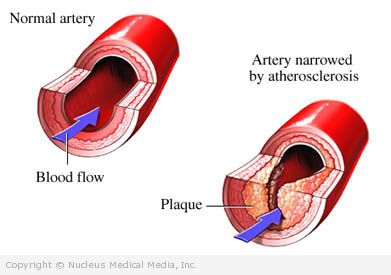Hyperlipidemia
(Dyslipidemia; High Triglycerides; Triglycerides, High)
Hyperlipidemia – Definition
Hyperlipidemia is a high level of fats in the blood. These fats, called lipids, include cholesterol and triglycerides. There are five types of hyperlipidemia. The type depends on which lipid in the blood is high.
Hyperlipidemia – Causes
Causes may include:
- A family history of hyperlipidemia
- A diet high in total fat, saturated fat, or cholesterol
- Obesity
- Excess alcohol intake
- Certain conditions, including:
- Diabetes
- Low thyroid
- Kidney problems
- Liver disease
- Cushing’s syndrome
- Certain drugs, such as:
- Hormones or birth control pills
- Beta-blockers
- Some diuretics
- Cortisone drugs
- Isotretinoin (for acne)
- Some anti- HIV drugs
Hyperlipidemia – Risk Factors
These factors increase your chance of developing this condition. Tell your doctor if you have any of these:
- Advancing age
- Sex: male
- Postmenopause
- Lack of exercise
- Smoking
- Stress
- Overuse of alcohol
Hyperlipidemia – Symptoms
Hyperlipidemia usually does not cause symptoms. Very high levels of lipids or triglycerides can cause:
- Fat deposits in the skin or tendons ( xanthomas)
- Pain, enlargement, or swelling of organs such as the liver, spleen, or pancreas ( pancreatitis)
- Obstruction of blood vessels in heart and brain
Hyperlipidemia can increase your risk of atherosclerosis. This is a dangerous hardening of the arteries. It can end up blocking blood flow. In some cases, this may result in:
- Angina
- Heart attack
- Stroke
- Other serious complications

Hyperlipidemia – Diagnosis
This condition is diagnosed with blood tests. These tests measure the levels of lipids in the blood. The National Cholesterol Education Program advises that you have your lipids checked at least once every five years, starting at age 20. Also, the American Academy of Pediatrics recommends lipid screening for children at risk (eg, a family history of hyperlipidemia).
Testing may consist of a fasting blood test for:
- Total cholesterol
- LDL (bad cholesterol)
- HDL (good cholesterol)
- Triglycerides
Your doctor may recommend more frequent or earlier testing if you have:
- Family history of hyperlipidemia
- Risk factor or disease that may cause hyperlipidemia
- Complication that may result from hyperlipidemia
Hyperlipidemia – Treatment
Treatment is not only aimed at correcting your cholesterol levels, but also at lowering your overall risk for heart disease and strokes.
Diet Changes
- Eat a diet low in total fat, saturated fat, and cholesterol.
- Reduce or eliminate the amount of alcohol you drink.
- Eat more high-fiber foods.
Lifestyle Changes
- If you are overweight, lose weight.
- If you smoke, quit.
- Exercise regularly. Talk to you doctor before starting an exercise program. You may already have hardening of the arteries or heart disease. These conditions increase your risk of having a heart attack while exercising.
- Make sure other medical conditions such as high blood pressure and diabetes are being treated and controlled.
Medications
There are a number of drugs available, such as statins, to treat this condition and help lower your risk for heart disease. Talk to your doctor. Statins have been shown to reduce mortality (death), heart attacks, and stroke.
These medicines are best used as additions to diet and exercise and should not replace healthy lifestyle changes.
Hyperlipidemia – Prevention
To help reduce your chance of getting hyperlipidemia, take the following steps:
- Starting at age 20, get cholesterol tests.
- Eat a diet low in total fat, saturated fat, and cholesterol.
- If you smoke, quit.
- Drink alcohol in moderation (two drinks per day for men, one drink per day for women).
- If you are overweight, lose weight.
- Exercise regularly. Talk with your doctor first.
- If you have diabetes, control your blood sugar.
- Talk to your doctor about medications you are taking. They may have side effects that cause hyperlipidemia.
